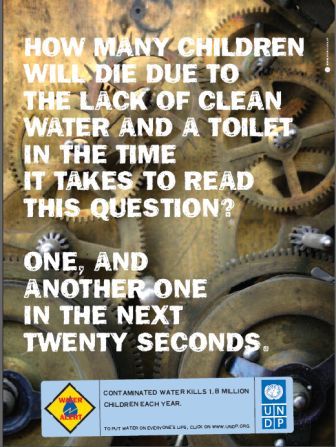Health
On the book shelf: Interlinking of Rivers in India, Issues and Concerns
Posted on 31 Aug, 2008 10:26 AM Key Features: Reviews the risks of inter-basin water transfers warns of critical disadvantages with India's proposed ILR plan offers viable less-risky solutions for water resource development. Inter-basin water transfers are complex human interventions on natural systems that can have profound adverse as well as beneficial social, economic and environmental implications. India's plan to interlink its rivers (ILR) and to transfer water may, according to one set of views, generate positive benefits through improved and expanded irrigation and may also contribute to flood and drought hazards mitigation for India, although the magnitudes are debatable. However, there are opposing views, in the context of India itself, that the interlinking plan is economically prohibitive, fraught with uncertainties, and has potential for disastrous and irreversible adverse after-effects. Water deficit can be reduced through improved water management without large scale engineering interventions. Moreover many of the rivers involved, particularly in the Himalayan component, are international and, therefore, the scheme has major implications for other riparians. Indeed, the planned transfer of water from the Ganges and Brahmaputra rivers will adversely impact Bangladesh socially, economically and environmentally---unless arrangements are made to maintain historical flows, which is unlikely to be feasible.
Key Features: Reviews the risks of inter-basin water transfers warns of critical disadvantages with India's proposed ILR plan offers viable less-risky solutions for water resource development. Inter-basin water transfers are complex human interventions on natural systems that can have profound adverse as well as beneficial social, economic and environmental implications. India's plan to interlink its rivers (ILR) and to transfer water may, according to one set of views, generate positive benefits through improved and expanded irrigation and may also contribute to flood and drought hazards mitigation for India, although the magnitudes are debatable. However, there are opposing views, in the context of India itself, that the interlinking plan is economically prohibitive, fraught with uncertainties, and has potential for disastrous and irreversible adverse after-effects. Water deficit can be reduced through improved water management without large scale engineering interventions. Moreover many of the rivers involved, particularly in the Himalayan component, are international and, therefore, the scheme has major implications for other riparians. Indeed, the planned transfer of water from the Ganges and Brahmaputra rivers will adversely impact Bangladesh socially, economically and environmentally---unless arrangements are made to maintain historical flows, which is unlikely to be feasible.
Microfinance for safe drinking water-ACCESS & HUL partnership
Posted on 21 Mar, 2008 12:12 AMDrop by drop ACCESS & HUL in Base of Pyramid Partnership for Safe Drinking Water for Rural Poor:
Yakalakshmi lives in Nekkunda village, Telengana region in Andhra Pradesh with her husband and two children. Though she has water piped to her house by the village panchayat, her entire family fell ill for a month last monsoon season by drinking water directly from the tap. "We all got high fever and severe diarrhea", she says, "we had to spend around Rs. 4000 on health care, which was very difficult for us". So when she got the opportunity this January to buy an effective water purifier through her Self Help Group (SHG) on an installment basis she was one of the first to sign up. Yakalakshmi is just one of the beneficiaries of a unique tie-up between ACCESS Development Services, a microfinance technical services non-profit organization, and Hindustan Unilever Limited, one of the country's largest producers of fast-moving consumer goods, to provide safe drinking water to rural poor. "Most of these villages have piped water or boreholes", says Padma, Project Coordinator at a local NGO, PEACE, "the problem is that tests by UNICEF in this district show that up to 70 percent of these sources are contaminated."The contamination gets even worse during the rainy season, especially due to poor sanitation and waste-management practices.
SAFEWAT: Water purification system by Population Services International
Posted on 18 Feb, 2008 11:15 AMMost drinking water projects are designed for supply of treated water through pipes to communities ; this requires investment on infrastructure such as pumps, overhead tanks, supply pipes, water purification equipment and after the project, maintenance staff and funds; while all this calls for planning, funding and time to execute, yet we cannot be certain that the water delivered remains uncon
Gastro-enteritis rears its head due to contaminated water in Bangalore
Posted on 30 Jan, 2008 01:46 AMThere is a spurt of gastro-enteritis in the city today. Residents think that it is the contaminated mains supply from the BWSSB that is the source of the gastroenteritis. The Bangalore water supply and Sewerage Board thinks it is water bought by residents from the private water tankers that is the cause but then seems to change its mind.






